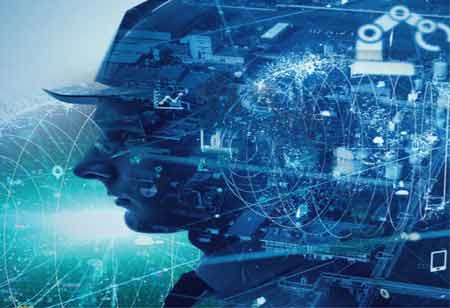THANK YOU FOR SUBSCRIBING

Embracing Artificial Intelligence: Dispelling Fears and Unleashing Opportunities
Luiz Carlos Feliponi, Head of Information Technology at Grupo KYLY

 Luiz Carlos Feliponi, Head of Information Technology at Grupo KYLY
Luiz Carlos Feliponi, Head of Information Technology at Grupo KYLYThe widespread discussions on artificial intelligence (AI) in the industry and retail sectors have captured the attention of professionals and organizations alike. As an experienced CIO with over 25 years of experience, primarily focusing on process automation, IoT and ERP SAP Implementation, I have witnessed firsthand the transformative potential of AI and its impact on businesses. In this article, I will delve deeper into the concerns and opportunities that professionals should consider, addressing the fears surrounding AI’s impact on job displacement while highlighting the significant opportunities and advancements that AI brings to the table.
Market indicators surrounding the rise of AI have been nothing short of astounding. According to a recent report by Grand View Research, the global AI market size is expected to reach $733.7 billion by 2027, growing at a compound annual growth rate (CAGR) of 42.2% from 2020 to 2027. This rapid growth is a testament to the countless benefits that AI has delivered across various industries, including healthcare, finance, transportation, and retail.
However, the rise of AI has also sparked concerns about job displacement and insecurity. Many professionals worry that AI-powered automation will render their roles obsolete, much like the fears that arose during the advent of computers. It is essential to remember that when computers were first introduced, many believed they would spell the end of various industries and jobs. However, the reality was quite different. The widespread adoption of computers led to the creation of new job opportunities and industries, such as software development, IT support, and e-commerce.
Similarly, AI is poised to create new roles and opportunities for professionals who are willing to adapt and evolve. For instance, AI-powered automation will enable employees to focus on more strategic and creative tasks, while AI takes care of mundane and repetitive tasks. This shift will lead to the creation of new roles, such as AI trainers, AI ethicists, and AI strategy consultants.
The tech hype graph, also known as the Gartner Hype Cycle, provides valuable insights into the evolution of emerging technologies like AI. The graph consists of five stages: innovation trigger, peak of inflated expectations, trough of disillusionment, slope of enlightenment, and plateau of productivity. Currently, AI is navigating through the peak of inflated expectations, where the hype surrounding AI often leads to unrealistic expectations and fears.
" Integrating AI as a co-pilot or an assistant allows professionals to leverage its capabilities to streamline processes, enhance decision-making, and elevate their overall performance "
As AI progresses through the trough of disillusionment and eventually reaches the plateau of productivity, we will witness a more balanced and realistic understanding of AI’s capabilities and limitations. This understanding will help organizations and professionals to better harness the potential of AI while mitigating the associated risks and concerns.
To fully embrace the opportunities presented by AI, it is crucial for businesses and professionals to invest in upskilling and reskilling initiatives. By acquiring new skills and knowledge in AI, machine learning, and data analytics, professionals can future-proof their careers and contribute actively to the growth and success of their organizations.
 Moreover, organizations should focus on developing a culture of innovation and continuous learning. Encouraging employees to experiment with new technologies and ideas will not only foster a sense of ownership and engagement but also help businesses stay ahead of the curve in the rapidly evolving AI landscape.
Moreover, organizations should focus on developing a culture of innovation and continuous learning. Encouraging employees to experiment with new technologies and ideas will not only foster a sense of ownership and engagement but also help businesses stay ahead of the curve in the rapidly evolving AI landscape.
A prime example of technology adoption and adaptation can be found in the invention of the chainsaw. When it was first introduced, lumberjacks were initially outraged, fearing that the new tool would render their skills obsolete. However, as time passed, chainsaws became an indispensable tool, and lumberjacks adapted to the change, undoubtedly finding new roles and activities to perform within their industry.
I believe that AI will not directly replace jobs; rather, it will augment and enhance human capabilities. Those who learn to use AI as a co-pilot, or an assistant will be the ones who truly benefit from this technological revolution. By embracing AI as a complement to human skills and expertise, professionals can unlock new opportunities and drive innovation across various industries.
Integrating AI as a co-pilot or an assistant allows professionals to leverage its capabilities to streamline processes, enhance decision-making, and elevate their overall performance. This collaborative approach to AI adoption will not only help dispel fears of job displacement but also foster a more resilient and adaptable workforce, ready to tackle the challenges of the future.
In conclusion, while the rise of artificial intelligence has undoubtedly sparked concerns about job displacement and insecurity, history has shown us that the advent of new technologies often leads to the creation of new opportunities and industries. By focusing on the positive aspects of AI, such as increased efficiency, cost savings, and the ability to tackle complex problems, businesses and professionals can harness the full potential of AI while dispelling the fears surrounding it.
As we continue to witness the transformative impact of AI across various industries, it is essential for professionals and organizations to adapt, learn, and evolve. By doing so, we can collectively embrace the opportunities presented by AI and contribute to a more prosperous and innovative future.
Read Also





















ON THE DECK